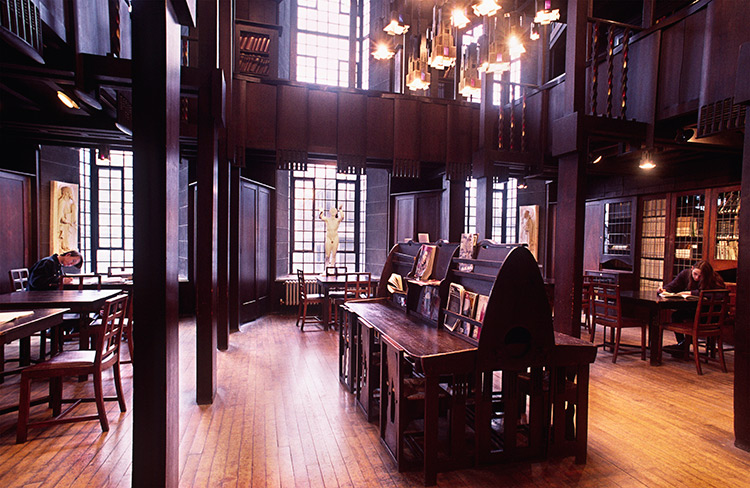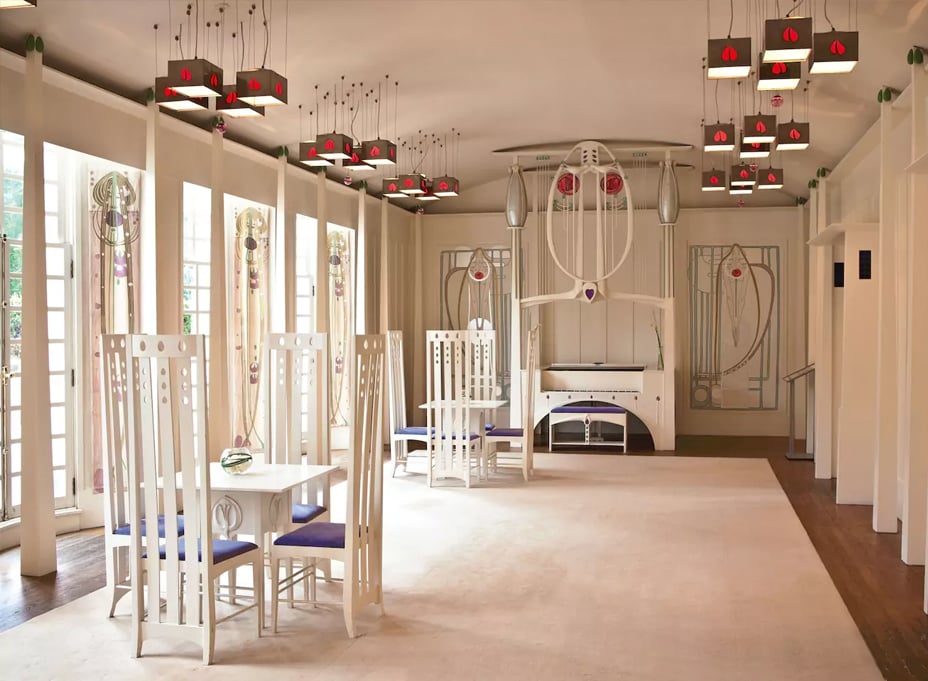Charles Rennie Macintosh




Phew. Working with a couple of good PM’s at the mo.
did you get chance to go around the school of art before the fire?
Yes. Luckily enough when I was a student, I had a friend studying there and she showed me around the place.
Really ? More beautiful than this ?
Here’s the inside (yes, the far end really is over the horizon)
VB
Fantastic, very lucky. Ive had a nose around the newish building opposite by Steven Holl when up in Glasgow for a project. The city planners are a good bunch. Very much like the Reich & Hall work at the city and riverside university sites. Great practice.
I guess that’s been long enough for the rain to wash away the surrounding earth, revealing the basement dungeon and the foundation piles.
VB
one of the few buildings that my wife actually appreciated on our ‘romantic’ trip for her 30th, she hated Paris (mainly because she thought the surprise was going to be New York).
Could also apply to some meatmen…
Incapability Brown, circa 2010 - 2017

nice to see you’ve trained the dog to keep off the grass
I enjoyed my architectural trip last week, we didn’t see many masculine lines to the buildings we looked at
From.
Modernist Semis and Terraces in England

Finn Jensen
Routledge, 5 Dec 2016 - Architecture - 264 pages
0 Reviews
Between the two World Wars, there was an unprecedented need for new houses in Britain which resulted in a building boom. While only a small percentage of this building took the form of Modernism, there was still a significant number of semis and terraces built for the workers and middle-class families in the 1920s and 1930s built in this style. This book examines these modest Modernist houses within the broader context of the Modern Movement in Europe, as well as the inter-war building boom in suburban Britain. Illustrated with line drawings and photographs of more than 30 examples from around the country, and based on little-known contemporary material such as catalogues, advertisements, radio broadcasts and letters, it shows how these houses speak of a time of political, social and artistic unrest, and a world where the avant-garde architects sought to capture the spirit of modern technology in their designs for the average home owner. While the Modernist houses never became popular with the general public, the fact that so many are still standing and now sought after by twenty-first century families speak for their endurance and special appeal.
You see, it’s only the highly trained eye that can see any grass in that picture
looks like they are being well and truly butchered by current/former owners. Love a bit of UPVC.
Top work,friend lived in one of those in the 70s